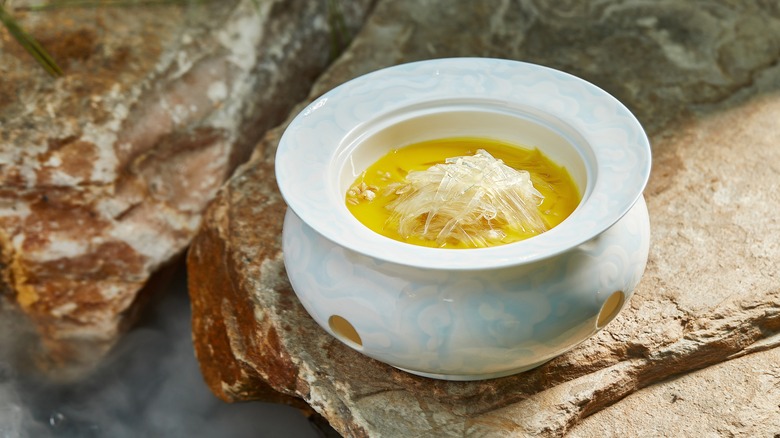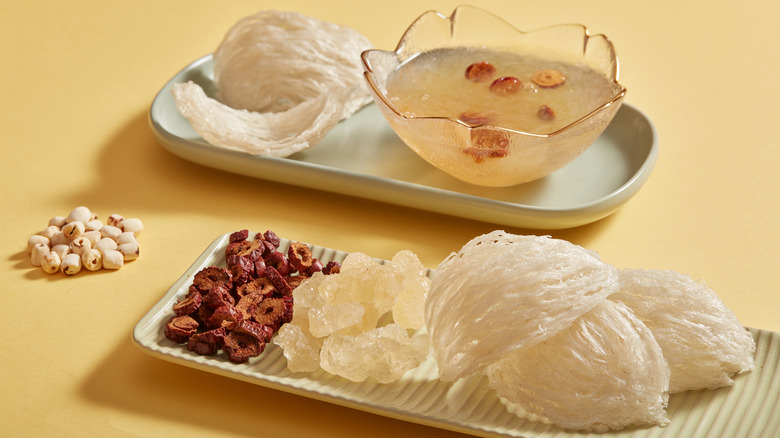Why Bird's Nest Soup Is Staggeringly Expensive
Since the 1500s, Chinese aristocrats demanded bird's nest soup for its purported medicinal benefits. Still popular today, bird's nest soup is found throughout Southeast Asia and can cost you up to $100 for a bowl. Called "caviar of the east", Edible Bird's Nests (EBN) are one of the world's most expensive foods, commanding anywhere from $2,000 to a whopping $10,000 retail. When cooked, EBNs are rather bland and strangely gelatinous in a soup that can be made savory or sweet, so it's a head-scratcher as to why bird's nest soup is outrageously expensive.
Two factors account for why EBNs are so pricey: What they are and how they're harvested. EBNs are not made of twigs and leaves like other bird nests. Instead, they're made from the saliva excreted from the glands of the swiftlet, a small Southeast Asia bird that lives in caves or under cliff ledges, where the male swiftlets build their nests. When the saliva hardens, it creates an intricately woven shell composed of red, yellow, or white threads. Red EBNs are the most prized and expensive because it's believed the nests get their color and medicinal properties from the swiftlet's blood, a theory that has been scientifically disproved. Contributing to the cost is the extreme danger involved for collectors to scrape the nests from high cave ceilings and precariously situated cliffs.
How bird's nest soup is made
Swiftlets are protected under the Wildlife Conservation Enactment of 1997, and their nests can only be harvested twice a year. In Southeast Asia, raising these birds for their nests is a lucrative business, and many families turn an upper floor of their homes into a swiftlet rookery. Before they are sold for consumption, the nests are soaked and methodically plucked to remove feathers, feces, and other detritus. They are then air-dried and finally packaged, with the time-consuming labor adding to their hefty price tag. Despite the careful cleansing of the nests, there is some health risk in eating them, such as severe allergic reactions to the swiftlet's saliva or food poisoning from leftover bacteria.
There are two common recipes for making bird's nest soup. An essential step in both is soaking the bird's nests for several hours to release any residual unappetizing bits that may still be clinging to them. A savory version calls for boiling pre-soaked bird's nests in chicken stock, then adding ginger, mushrooms, and chicken. The more common method in Chinese cuisine is making a sweet soup by adding the pre-soaked bird's nests to a boiled stock of water, date palm, goji berries, and rock sugar. But if you're worried about the prohibitive pricing of EBNs, you might want to try to make other Asian soups — including hot and sour soup and Thai chicken noodles – that won't cost you a month's rent.

